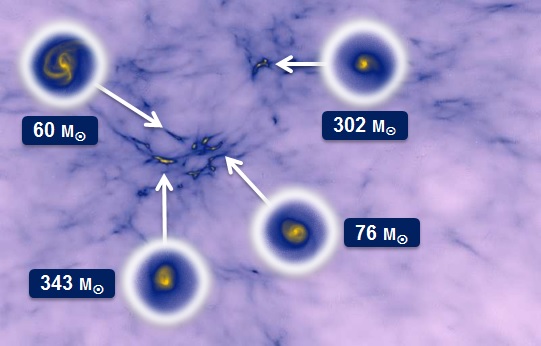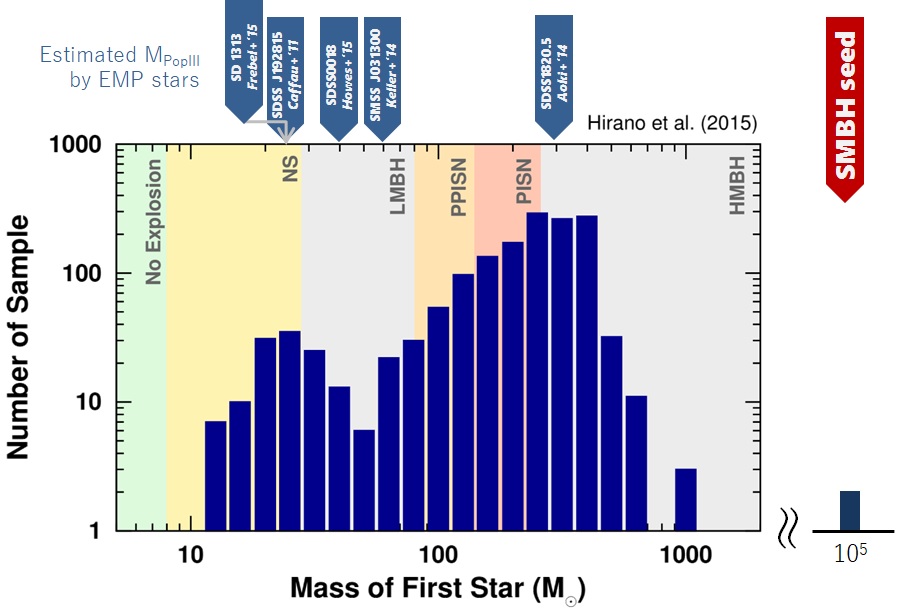Research
Last modified: 10 June 2017
- Key Words
-
- Cosmic dawn, first stars, and first galaxies
- Star formation and evolution
- Numerical simulation
Formation theory of first-generation objects
My research interest focuses on the cosmic history in the astronomical aspect, in especially, at the early stage. There is a historic milestone which mark a turning point in the early universe, so-called first star. I would like to try to uncover mystery-shrouded properties of such first-generation stars by performing numerical simulations.
Because the matter configuration in the early universe is determined by the modern cosmology, we can perform ab initio simulation of first star formation (movie on YouTube). A number of cosmological simulations show that the first star forms inside the dark matter dominated minihalo after one hundred million year of the Big-Bang.
How massive are first stars?
To determine the stellar mass, we have to calculate the evolution of accreting protostar until the mass accretion ends. We determine the final mass of first star by performing coupled simulation. Calculation results show that calculated masses of first stars greatly depend on certain properties of primordial star-forming cloud.

Initial mass function of first stars
We make a non-biased statistical sample of primordial star-formating clouds to construct the mass distribution of first stars. Results suggest a presence of average properties of star-forming clouds which results in a certain fiducial mass of first stars. We also find that such average mass decreases with decreasing redshift.

The numerical calculations and data analysis were carried out on computers at
- Texas Advanced Computing Center (TACC) at the University of Texas at Austin (Stampede; 2016 — present)
- Center for Computational Astrophysics (CfCA) of the National Astronomical Observatory of Japan (NAOJ) (Cray XT4, PC cluster, Cray XC30; 2012 — present)
- Center for Computational Sciences (CCS), University of Tsukuba (PACS-CS, T2K-Tsukuba, COMA; 2011 — 2017)
- YITP at Kyoto University (HITACHI SR16000, Cray XC40; 2011 — present)